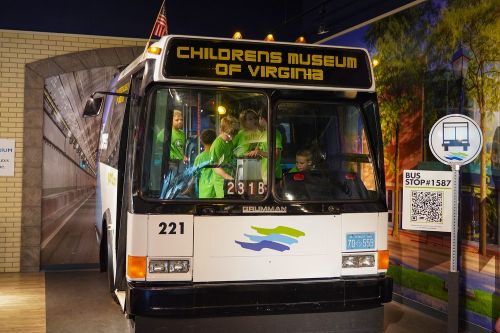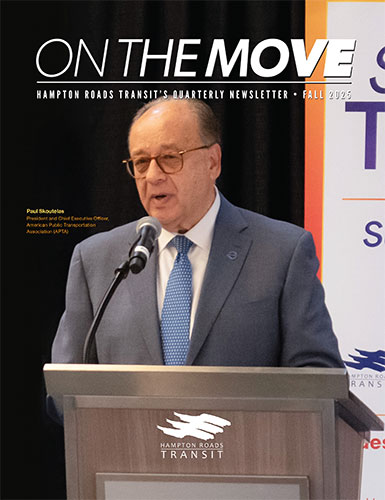These New Smart Stops from Hampton Roads Transit Transform the Rider Experience
Hampton Roads Transit (HRT) recently launched its new smart stops. This state-of-the-art technology was developed in-house and installed at more than 2,600 stops across HRT’s service area. The agency is one of the first in the nation to use this technology, which is already exceeding expectations.
Each smart stop sign features a unique QR code that enables customers to access real-time bus information, view route maps and schedules, report bus stop cleanliness and safety issues, and more.
“HRT’s smart stops usher in a new era of convenience, innovation, and mobility,” said William E. Harrell, HRT’s President and CEO. “This innovative, location-based technology, paired with visible and reflective signage, is designed to enhance the rider experience.”
The smart stop design and technology was born out of HRT’s “Am I Clean” initiative. “Am I Clean” used a single QR code, where each smart stop is given a unique QR code. The technology was developed in collaboration with HRT’s technology and facilities departments.
Technology has been tracking the use of QR codes since the first sign went up. Less than three months after the official launch in July of this year, smart stops page views exceeded HRT homepage page views – averaging 10,000 page views per week – according to HRT’s Digital Services & Web team. This shows that customers are actively engaging with the new technology and recognizing its value.
“That was a huge indication of success,” said Scott Demharter, Director of Facilities. “People are starting to use them and recognize them at their bus stops.” It’s a trend Demharter expects will continue.

More than a bus stop sign
HRT’s network is vast, covering more than 400 square miles. Until recently, only about 200 of its 2,600 bus stops had some amenity – a bench, trash can, or shelter – all requiring service. Now that number is closer to 600 and growing by the day.
“We needed to know what we had out there,” Demharter recalls. “What is at each stop, or should be at each stop. We needed to have a way to keep track of the inventory and the services being provided.”
HRT staff and contractors use the QR code to validate that work has been completed or to report issues that need attention. Transit stop technicians can also utilize the QR codes to track any work that’s been done or needs to be done.
“Now we have the ability to know who was cleaning a stop and when,” Demharter explained. “It’s such a great tool for our internal staff and our contractors.”
Reporting problems at a stop is much easier, too. Customers can scan the QR code, enter some information, and Facilities teams are notified almost immediately.
“We get those reports in real-time,” Demharter explains. “That’s really helpful because we can’t really do anything with old information.”
Technology aside, the new signs look better. The design features a large single aluminum panel wrapped in highly reflective anti-graffiti vinyl, which requires less material and maintenance. The new signage has already saved HRT more than $600,000 since they were installed.
Demharter says other features are in the works that could benefit customers, customer service, and communications departments. For example, if a passenger scans a QR code at a stop during inclement weather and that bus isn’t running, they will receive a notification.
“The possibilities are endless,” Demharter said, “Smart stops really blossomed into something cool, and I can’t wait to see how it’s going to be used moving forward.”





